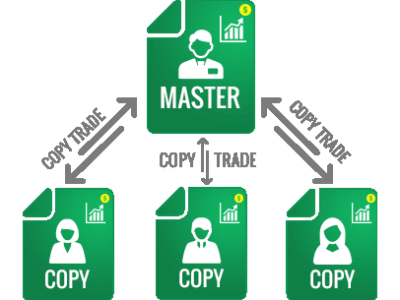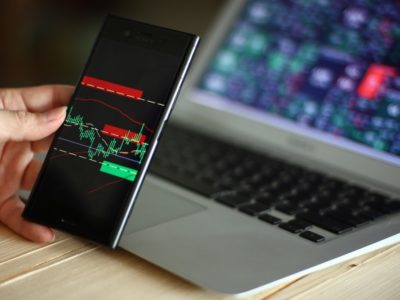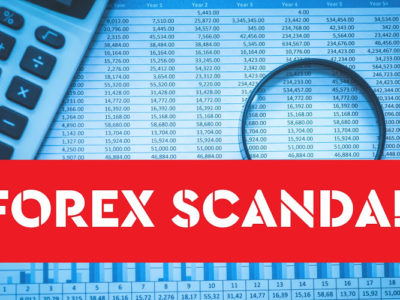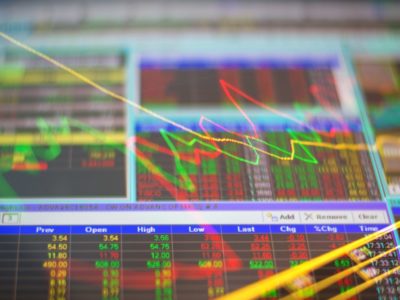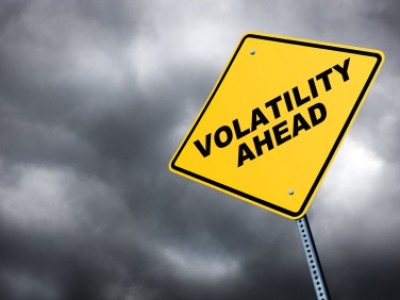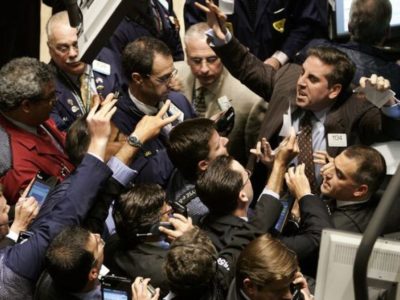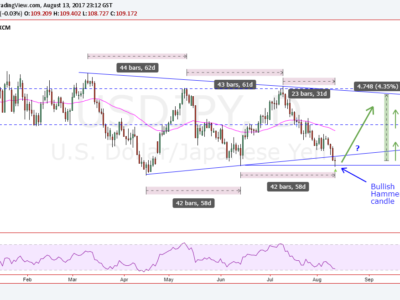The Ultimate Risk Reward Ratio Guide
The risk reward ratio is a very controversial trading topic and while some traders claim that the risk reward ratio is totally useless, others believe it is the Holy Grail in trading. In the following article we shed light on how to use the risk reward ratio correctly, share some lesser known facts about the concepts and demystify the ideas behind risk reward ratio.
Myth 1: The Risk Reward Ratio Is Useless
You often read that traders say the risk reward ratio is useless – they are absolutely right. The risk reward ratio alone has no value if you analyze it by itself without setting it in relation with other statistical figures from your trading performance.
However, if you know how to use the risk reward ratio properly, it is one of the most important metrics in your daily life as a trader. Without knowing the risk reward ratio of a single trade, it is literally impossible to trade profitably. In the following we will show you why it is such an important metric and how to use the risk reward ratio correctly.
Myth 2: Good vs. Bad Risk Reward Ratio
The second myth around risk reward ratios concerns recommendations of a certain number for the optimal risk reward ratio. While researching for this article I stumbled over various sites who recommend that taking trades with a risk reward ratio of less than 1:1 cannot result in profits, or that the professional traders only take trades with a risk reward ratio of 2:1 or higher.
Whenever you read something similar, leave the website immediately and if another trader recommends fixed risk reward ratios, it is one of the easiest signs that he does not know what he is talking about and completely misunderstands the concept of risk reward ratio and how trading works.
The optimal risk reward only depends on your own trading strategy and your performance and on nothing else. Whereas one trader will only be able to trade profitably with a risk reward of greater than 3:1 because of a low overall winrate, another trader can comfortably take trades with a risk reward of less than 1 and make money consistently. As we will see later, the risk reward ratio can only be interpreted if you set it in relation with your winrate, therefore, recommendations of the ‘optimal risk reward ratio’ are useless.
Myth 3: You Can Trade With A Mental Stop Loss Order
Once a trader is aware of how the concept of the risk reward ratio works, he will see that trading without having an exact and fixed price level is impossible. Only if you know where you will place your stop loss order before entering the trade, you are able to calculate your risk reward ratio, the required winrate and judge whether a trade has a positive expectancy or not.
What The Risk Reward Ratio Tells You
We have talked about this before and that’s why we will keep this point short for now. When you know the risk reward ratio of a single trade, you can easily calculate the required winrate. You can then compare the required winrate with your overall historical winrate to judge whether a trade has a positive expectancy or now.
Required Winrate = 1 / (1 + Risk:Reward)
For example, if you enter a trade with a 1:1 risk reward ratio, your overall winrate has to be higher than 50% to be a profitable trader: 1 / (1+1) = 0.5 = 50%
If you keep taking trades where your required winrate is greater than your actual winrate, you will inevitably lose money long term.

Tip: Track your winrate for different setups and instruments to make better trading decisions. And never try to adjust stop loss and take profit orders to achieve a certain risk reward ratio. Find reasonable spots for stop loss and take profit orders and if the resulting risk reward does not allow a profitable outcome, when comparing to your winrate, skip the trade.
The Risk Reward During A Trade
The Risk Reward Ratio Declines During The Duration Of A Trade
Naturally, when you are in a trade and price starts moving in your favor, the risk reward ratio of the trade declines while the required winrate increases. Whereas this is a natural behavior, it is the professional trader who knows how to use this effect correctly. A declining risk reward ratio results in a variety of changing risk metrics that we will explore further now.
The graphic below shows you the development of the declining risk reward ratio when price starts moving in your favor and the consequent rise of the required winrate. Just before price is about to hit your take profit order, the risk reward ratio is worst and to making the correct trading decision is very difficult.

The Effects Of Trailing Your Stop Loss Order
Moving your stop loss closer to current price is done to protect profits and to reduce the potential loss, but it also has effects on the risk reward ratio of course. By constantly moving your stop loss closer to current price, a trader increases his risk reward ratio and therefore reduces the required winrate during a trade. Together this can increase expectancy of your trading strategy. However, the tradeoff is that if you move your stop loss order too close to current price, you will be taken out of your positions and miss out on potentially bigger profits – the professional trader, therefore, has to find the balance between increasing the risk reward ratio of his trades without increasing his risk of being taken out too often.

Making Mid-Trade Decisions About Risk Reward Ratio
We’ve said previously that since the risk reward ratio declines during the duration of your trade, it is the smallest just before reaching your take profit order. We will now illustrate this with a real example and show you how a trader can make better mid-trade decisions.
1) Entering A Trade
For the sake of the argument, let’s say we are entering the short trade on the break of the pinbar. At this point the risk reward ratio is 2:1 (240/120) and our required winrate to be a profitable trader is 33.3% (1/3 ). So if our historical winrate is greater than 33.3% we can safely take the trade. If our winrate would be lower, we would have to skip the setup – even when it has all the entry criteria going for it.

2) The Risk Reward Ratio Declines
After price has moved in our favor, we have to reassess the situation. If we leave the stop loss order in the initial level, the new risk reward drops to 0.2 (60/270) and the required winrate is now 83% ( 1/1.2).

Traders get this wrong: Only because you are in a trade and in profit, it doesn’t mean that you are a victim to whatever price will do to you. And second, you have to be aware of the fact that you are not trading with free money when your trade is in profit. Most traders believe that unless they have closed the trade, the money they see in their floating P&L is not theirs – dead wrong! Once you start treating the money in the P&L like it’s your money, you have to protect it – being a trader means managing risk – and maximize the final payout.
Therefore, at any point in time during the trade you have to be aware of your current risk reward ratio and what it means for your required winrate. Ask yourself the following questions when making mid-trade decisions:
- What are the current risk reward ratio and the required winrate?
- Would I enter the trade with the current stop loss and take profit levels and the current risk reward ratio?
- If not, is there a reasonable price level where I can move my stop loss order to, to increase the risk reward ratio?
- If not, I should probably exit the trade!
3) Increasing The Risk Reward Ratio
Let’s say you waited for the next candle to close and because you see this new pinbar, your trading strategy tells you to move your stop loss order above the high of the pinbar (without having a systematic, rule based and repeatable approach to manage stop loss orders, a trader is making decisions based on emotions and gut-feel).

Now, your new risk reward increased to 1:1 (60/60) and the required winrate dropped to 50% (1/2). Again, during the duration of a trade you have to continuously evaluate the current situation and whereas the statistics of most traders would have meant that they should have exited the trade in the last picture with required winrate of 83%, the majority of traders will probably be able to stay in the trade or add to the current position with a required winrate of 50%.
Why You Cannot Just Choose A Higher RRR To Improve Your Performance
Now most traders will think that by setting a wider take profit, or a closer stop loss they can easily increase their risk reward ratio and, therefore, increase the expectancy of their trading performance. But is this really possible?
Reaching a wider take profit order has an inverse probability for your overall winrate, meaning that the further away you set your take profit order, the less likely it is that price will reach the take profit level – of course, this highly depends on market condition as well, your holding time and the way you set your stop loss order.

If a trader wants to use wider take profit orders (or closer stop loss orders), he will usually see a drop in his winrate. However, this does not necessarily imply that a winning trading strategy will turn into a losing one. A trader has to find the optimal balance between setting take profit orders further away and maintaining a positive expectancy.
What The Pros Say About Risk Reward Ratio
“You should always be able to find something where you can skew the reward risk relationship so greatly in your favor that you can take a variety of small investments with great reward risk opportunities that should give you minimum draw down pain and maximum upside opportunities.” – Paul Tudor Jones
“It’s not whether you’re right or wrong that’s important, but how much money you make when you’re right and how much you lose when you’re wrong.” – George Soros
“Frankly, I don’t see markets; I see risks, rewards, and money.” – Larry Hite
“It is essential to wait for trades with a good risk / reward ratio. Patience is a virtue for a trader.” – Alexander Elder
“Paul Tudor Jones [had a principle he used to use] called 5:1. […] he knows he’s going to be wrong [sometimes] so if he loses a dollar and has to spend another dollar, spending two to make five, he’s still up $3. He can be wrong four out of five times and still be in great shape.” – Anthony Robbins on Paul Tudor Jones
“The most important thing is money management, money management, money management. Anybody who is successful will tell you the same thing.” – Marty Schwartz
Or check out Jim Cramer’s video where he demystifies the concept of risk reward ratio in his show
Conclusion: The Risk Reward Ratio Is More Than You Think
As we have seen, the concept of the risk reward ratio is far more than dividing your take profit distance by your stop loss distance and looking to achieve a certain, arbitrary number. The risk reward ratio is a dynamic concept and continuously tracking this metric and reevaluating your current situation during a trade separates the professional from the amateur trader. If you want to play around with different trading statistics and get a better feeling how different trade parameters interact, check out our free risk analytics tool.


